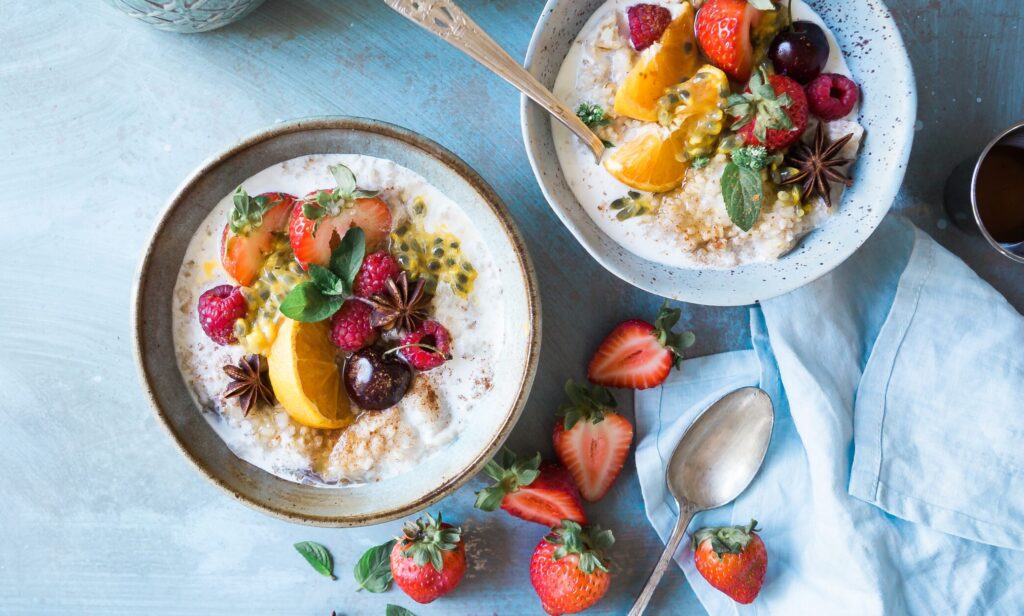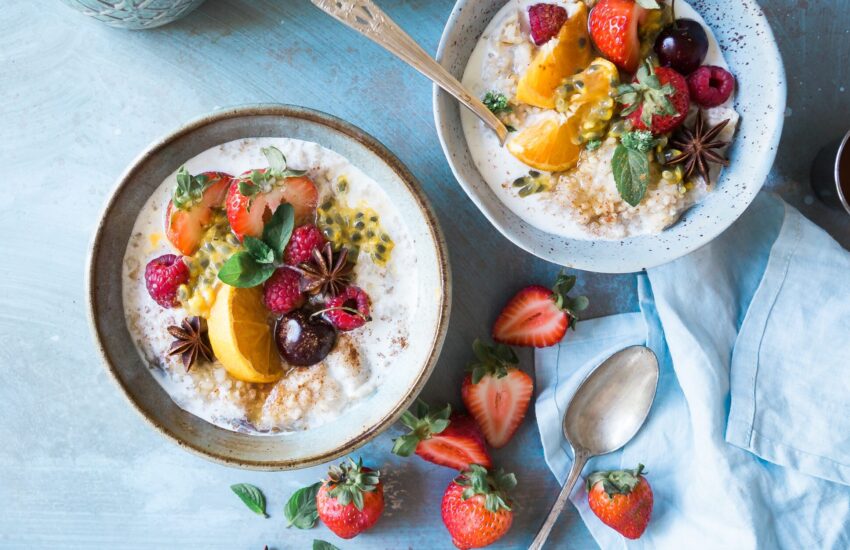1. Introduction to the Oatmeal Diet

What is the Oatmeal Diet?
The oatmeal diet is a short-term, calorie-controlled eating plan that primarily revolves around oatmeal as the central component of your daily meals. This diet is designed to promote weight loss, boost overall health, and encourage sustainable eating habits.
How Does the Oatmeal Diet Work?
The oatmeal diet operates on the principle of calorie restriction and portion control. By replacing some of your meals with oatmeal, you can create a calorie deficit, which is essential for weight loss. Oatmeal is a filling and nutrient-dense food that can help curb your appetite, making it easier to stick to the diet plan.
Is the Oatmeal Diet Safe?
The oatmeal diet can be a safe and effective way to lose weight, but it’s essential to approach it sensibly and maintain a balanced nutritional intake. It is not recommended for long-term use, as it may lack diversity in nutrients required for overall health. Consult with a healthcare professional before starting any new diet plan, especially if you have underlying health conditions or dietary restrictions.
2. Nutritional Benefits of Oatmeal
Oatmeal’s Role in Weight Loss
Oatmeal is an excellent choice for weight loss for several reasons:
- High Fiber Content: Oatmeal is rich in dietary fiber, which helps promote feelings of fullness and reduces hunger cravings.
- Low in Calories: Plain oats are relatively low in calories, making it easy to control your calorie intake while feeling satisfied.
- Complex Carbohydrates: Oats provide a steady source of energy due to their complex carbohydrates, helping maintain stable blood sugar levels.
- Protein: Oats contain a moderate amount of protein, which is essential for muscle preservation and satiety.
Oatmeal’s Nutritional Profile
A typical 1-cup (240ml) serving of cooked oatmeal contains:
- Calories: Around 150-160 kcal
- Carbohydrates: Approximately 30-32g
- Fiber: 4-6g
- Protein: 5-6g
- Fat: 2-3g
Health Benefits of Oats
Incorporating oats into your diet offers numerous health benefits:
- Heart Health: Oats are known to lower cholesterol levels, reducing the risk of heart disease.
- Digestive Health: The fiber in oats supports a healthy digestive system.
- Blood Sugar Control: Oats have a low glycemic index, helping stabilize blood sugar levels.
- Nutrient Density: Oats are rich in vitamins, minerals, and antioxidants, promoting overall well-being.
3. Getting Started with the Oatmeal Diet
Preparing for the Diet
Before starting the oatmeal diet, take the following steps:
- Set Clear Goals: Determine your weight loss goals and what you hope to achieve with the diet.
- Consult a Healthcare Professional: Speak with a healthcare provider or a registered dietitian to ensure the diet is suitable for your specific needs.
- Cleanse Your Pantry: Remove unhealthy and processed foods from your kitchen to reduce temptation.
Choosing the Right Oats
Selecting the right type of oats is crucial for your oatmeal diet. Here are some common options:
- Steel-Cut Oats: These are the least processed and have a chewy texture. They take longer to cook but are highly nutritious.
- Rolled Oats: Also known as old-fashioned oats, these are partially cooked and flattened, making them ideal for oatmeal.
- Instant Oats: These are pre-cooked and flattened oats, requiring the least cooking time. However, they may contain additives.
- Flavored Oats: Be cautious with flavored or sweetened oatmeal, as they often contain added sugars and calories.
Equipment You’ll Need
To prepare your oatmeal diet meals, you’ll need:
- A stove or microwave for cooking oats.
- A pot or microwave-safe bowl.
- Measuring cups and spoons.
- Basic kitchen utensils like a spoon, knife, and cutting board.
Sample Shopping List
When preparing for the oatmeal diet, consider the following items for your shopping list:
- Rolled oats or steel-cut oats.
- Fresh fruits (e.g., berries, bananas).
- Nuts and seeds (e.g., almonds, chia seeds).
- Low-fat milk or non-dairy milk alternatives.
- Yogurt (low-fat or Greek yogurt).
- Vegetables (e.g., spinach, tomatoes).
- Lean protein sources (e.g., chicken breast, tofu).
- Spices and herbs (e.g., cinnamon, basil).
- Cooking oils (e.g., olive oil, coconut oil).
- Sweeteners (e.g., honey, maple syrup).
- Hydration sources (e.g., water, herbal tea).
4. The Oatmeal Diet Plan
Weekly Meal Plan
The oatmeal diet plan typically spans seven days, and each day follows a similar structure:
- Breakfast: A serving of oatmeal with fruits and nuts.
- Lunch: A balanced meal incorporating protein, vegetables, and a small serving of oatmeal.
- Dinner: Another balanced meal, similar to lunch.
- Snacks: Healthy snacks, such as fruits, vegetables, or yogurt, between meals.
Daily Meal Structure
Here’s a breakdown of a typical day on the oatmeal diet:
- Breakfast: Start your day with a bowl of oatmeal topped with fresh fruits (e.g., berries or bananas) and a sprinkling of nuts or seeds. You can sweeten it with a touch of honey or maple syrup.
- Lunch: For lunch, have a balanced meal that includes lean protein (e.g., grilled chicken or tofu), vegetables (e.g., steamed broccoli or spinach), and a small portion of oatmeal on the side.
- Dinner: Your dinner should mirror your lunch, consisting of a lean protein source, vegetables, and a modest serving of oatmeal.
- Snacks: Throughout the day, enjoy healthy snacks like sliced apples with almond butter or carrot sticks with hummus. Keep portion sizes in check.
Oatmeal Variations
Accordingly Mohit Tandon Chicago, To prevent boredom and make your meals more exciting, consider trying various oatmeal recipes and flavor combinations. Here are a few ideas:
- Savory Oatmeal: Cook oats with vegetable broth instead of water and top them with sautéed vegetables and a poached egg.
- Fruity Oatmeal: Mix oats with dried or fresh fruits like raisins, apples, or peaches, and add a sprinkle of cinnamon.
- Nutty Oatmeal: Boost the protein content by adding chopped nuts or nut butter to your oatmeal.
- Spicy Oatmeal: Experiment with savory spices like cumin, paprika, or red pepper flakes, and top with avocado or salsa.
5. Tips for Success
To make the most of your oatmeal diet experience, follow these essential tips:
Portion Control
While oatmeal is nutritious, consuming excessive amounts can lead to calorie surplus. Stick to recommended portion sizes and avoid overindulgence.
Hydration
Stay hydrated by drinking plenty of water throughout the day. Proper hydration supports digestion and overall well-being.
Regular Exercise
Incorporate regular physical activity into your routine. A combination of cardiovascular exercise and strength training can help boost your metabolism and accelerate weight loss.
Managing Cravings
If you experience cravings for unhealthy foods, opt for healthier alternatives. For example, if you crave sweets, choose fresh fruit or a small serving of dark chocolate.
Monitoring Progress
Keep a journal to track your daily meals, exercise, and how you feel throughout the diet. This will help you identify patterns and make necessary adjustments.
6. Potential Drawbacks and Considerations
Nutrient Balance
Mohit Tandon Chicago says that The oatmeal diet may lack diversity in nutrients. Ensure you still receive essential vitamins and minerals by incorporating a variety of foods into your meals.
Sustainability
While the oatmeal diet is effective for short-term weight loss, it may not be sustainable in the long run. Transition to a balanced, varied diet after completing the plan.
Consultation with a Healthcare Professional
Before starting any diet, consult with a healthcare provider, especially if you have underlying health conditions, dietary restrictions, or are taking medications.
7. Frequently Asked Questions (FAQs)
Can I add sweeteners or toppings to my oatmeal?
Yes, you can add small amounts of natural sweeteners like honey or maple syrup. Toppings like fresh fruits, nuts, and seeds can enhance the flavor and nutrition of your oatmeal.
Is it suitable for vegetarians or vegans?
Absolutely! The oatmeal diet can be adapted to vegetarian or vegan lifestyles by choosing plant-based protein sources and dairy alternatives.
Can I follow the oatmeal diet if I have dietary restrictions?
Yes, the oatmeal diet is flexible and can be adapted to accommodate dietary restrictions such as gluten intolerance or food allergies. Choose gluten-free oats if needed and substitute ingredients as necessary.
8. Conclusion
The oatmeal diet can be an effective and nutritious way to jumpstart your weight loss journey and improve your overall health. By embracing the principles of portion control, balanced nutrition, and regular exercise, you can make the most of this short-term diet plan. However, remember that no single diet should replace long-term lifestyle changes for lasting results. Consult with a healthcare professional before starting any new diet, and always prioritize your health and well-being. With dedication and mindful eating, you can achieve your weight loss goals while enjoying the benefits of delicious and nutritious oatmeal.
